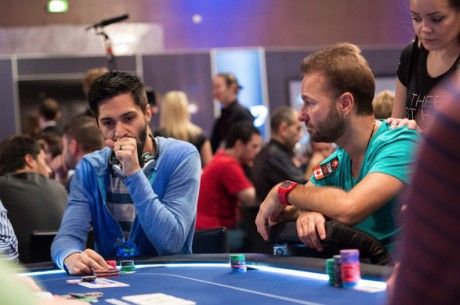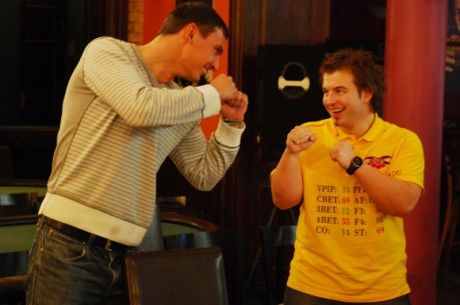Picking Profitable Spots: Learn How to Set Up Your Aggressive Moves

Soon after the Columbine High School shootings many years ago, I remember seeing an op-ed piece advocating the arming of selected teachers. It included a line that has stuck with me ever since: “Previously unthinkable problems require previously unthinkable solutions.”
Never mind what you think about the wisdom of arming teachers; that’s not my point. My point is about how we perceive novel problems and novel solutions. Let me give you a concrete example.
At my most recent poker session at Harrah’s Cherokee ($1/$2 no-limit hold’em), I was playing completely ABC poker early in the game, as is my usual practice. I like to get the table persuaded that I bet or raise when I have the goods, and check and fold when I don’t. After they think that, throwing them off the scent with bluffs and slow playing is more effective.
In a few hands, I had raised preflop with either two big cards or speculative holdings like small suited connectors, had a few callers, and missed the flop. Because of wanting to establish a straightforward table image and not wanting to bet with total air into several opponents, I checked and folded.
After this had happened a few times, I noticed that a competent, big-stacked player across the table would bet into flops that were unlikely to have helped my most likely starting hands. That is, if the first three cards came something like 9x5x3x-rainbow, he would, apparently, decide that flop had probably missed hands that I would have raised with preflop, such as big aces. So he would take a shot at picking up what might otherwise turn into an orphan pot.
This was smart. He was playing the math, which dictates that most flops will miss most players’ hands. I don’t know if he had caught a piece of these flops, or just decided that probably nobody else did and he could safely bluff. Either way, he won them uncontested.
But after this had happened two or three times, the pattern was fairly obvious to anybody paying attention. So I was ready the next time the pattern played out. I raised with KxJx-offsuit, got callers, and saw random-looking flop with no aces or face cards. And sure enough, Big Stack led out with a $15 bet, with me and one other player behind me.
Based on the same reasoning that he had presumably been relying on, I knew it was most likely that he had not connected strongly with this flop. Few $1/$2 NLHE players can resist the temptation to slow play their biggest hands, such as flopped sets, so I could be pretty confident that his bet represented nothing better than top pair, and probably less than that. Similarly, it was unlikely that the guy behind me had hit big. So I raised to $40, and took the pot.
What’s important here is why this worked — because it was the first time he had seen me take this line. It was more aggressive than I had been playing before. His natural conclusion was that an unprecedentedly aggressive bet implied that I had an unprecedentedly strong hand — such as a set, or perhaps aces or kings that didn’t need help from the flop to be the best hand.
It was the same reasoning that had caused me to fold two big cards the first time he bet into one of these situations. I concluded that he probably hit a piece of it, when I didn’t. But after seeing him do that a couple more times, it was no longer an unprecedentedly strong move. It became harder to give him credit for having something worth betting on every time.
And, of course, if I had kept on raising his donk bets, as I did that one time, before too long he would stop assuming that such aggression must represent real strength.
Here’s the point: The first time an observant opponent sees you taking an unusually strong action, you’re likely to get a ton of respect, but the second or third time you do it, you probably won’t.
So how should you exploit this insight? Well, think about it. When you actually have the monster hand, do you want opponents to fold or call? Call — right? But when you pull the unprecedentedly aggressive move, you’re more likely to get folds. Which means that it might be smartest to make your unprecedentedly aggressive moves when you have nothing. You’re not going to get called lightly.
Then do it again sometime, again without much of a hand, and you’re likely to get away with it again.
But the third time, assuming you have opponents who are paying attention, you’d better have what you’re representing, because by now you will have aroused suspicion and curiosity. When you’re expecting to get called, that’s when you want to have the actual monster hand, in order to collect from the hands that are strong enough to dare calling.
Most players at this level get this all backwards. They do the aggressive preflop limp-reraise for the first time when they actually do have the AxAx or KxKx that such a move implies. Or they put in their first check-raise only after flopping a set. Or they bet a scare card on the river — e.g., one that completes a straight or flush — for the first time only if it actually made their hand.
They’re not thinking things through. They’re inducing folds when they should be trying to get calls. It is much better strategy to use the enormous credit you’re going to get with a newly aggressive move to win a pot that you couldn’t win on the strength of your cards — that is, on a pure bluff.
As an added bonus, it’s also a hell of a lot more fun!
Robert Woolley lives in Asheville, NC. He spent several years in Las Vegas and chronicled his life in poker on the “Poker Grump” blog.
Get all the latest PokerNews updates on your social media outlets. Follow us on Twitter and find us on both Facebook and Google+!








